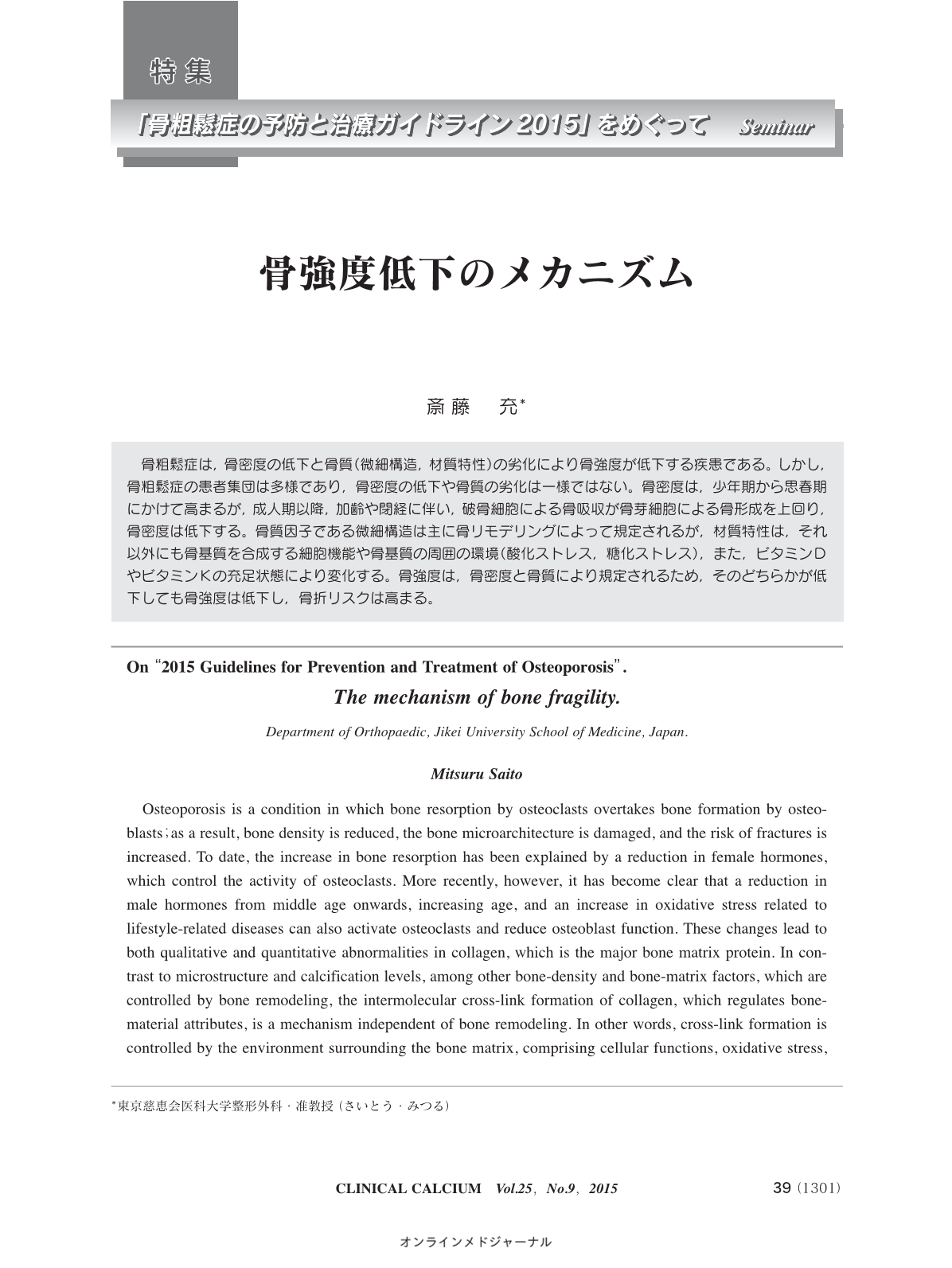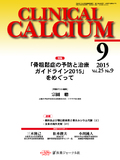Japanese
English
- 有料閲覧
- Abstract 文献概要
- 1ページ目 Look Inside
- 参考文献 Reference
骨粗鬆症は,骨密度の低下と骨質(微細構造,材質特性)の劣化により骨強度が低下する疾患である。しかし,骨粗鬆症の患者集団は多様であり,骨密度の低下や骨質の劣化は一様ではない。骨密度は,少年期から思春期にかけて高まるが,成人期以降,加齢や閉経に伴い,破骨細胞による骨吸収が骨芽細胞による骨形成を上回り,骨密度は低下する。骨質因子である微細構造は主に骨リモデリングによって規定されるが,材質特性は,それ以外にも骨基質を合成する細胞機能や骨基質の周囲の環境(酸化ストレス,糖化ストレス),また,ビタミンDやビタミンKの充足状態により変化する。骨強度は,骨密度と骨質により規定されるため,そのどちらかが低下しても骨強度は低下し,骨折リスクは高まる。
Osteoporosis is a condition in which bone resorption by osteoclasts overtakes bone formation by osteoblasts;as a result, bone density is reduced, the bone microarchitecture is damaged, and the risk of fractures is increased. To date, the increase in bone resorption has been explained by a reduction in female hormones, which control the activity of osteoclasts. More recently, however, it has become clear that a reduction in male hormones from middle age onwards, increasing age, and an increase in oxidative stress related to lifestyle-related diseases can also activate osteoclasts and reduce osteoblast function. These changes lead to both qualitative and quantitative abnormalities in collagen, which is the major bone matrix protein. In contrast to microstructure and calcification levels, among other bone-density and bone-matrix factors, which are controlled by bone remodeling, the intermolecular cross-link formation of collagen, which regulates bone-material attributes, is a mechanism independent of bone remodeling. In other words, cross-link formation is controlled by the environment surrounding the bone matrix, comprising cellular functions, oxidative stress, carbonyl stress, and glycation level. Therefore, bone quality is regulated both by bone remodeling and by a remodeling-independent mechanism, and markers for evaluating bone quality should be established.



